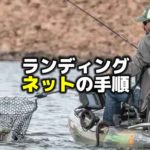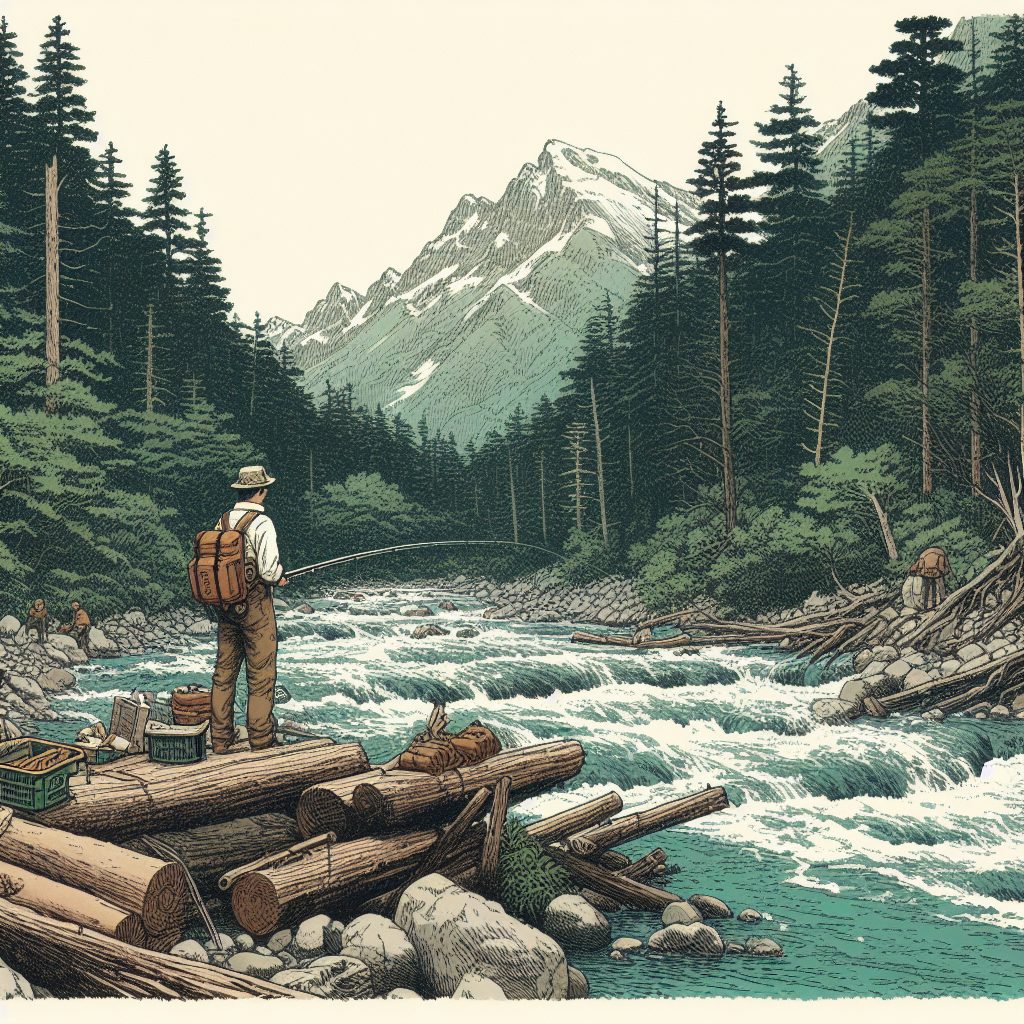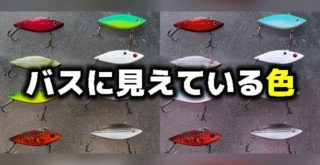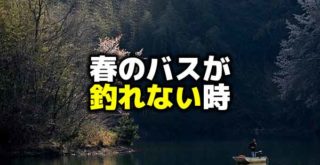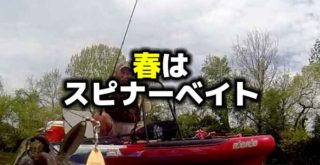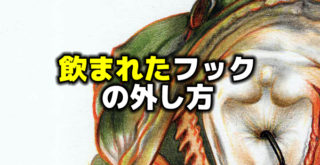人がアウトドアで遭難する10の理由

Photo by outdoor life.com
こんにちは!店長の小山です!
本日は海外サイトより、”10 Reasons People Get Lost in the Wild”という記事を引用してご紹介いたします。
引用先:outdoorlife.com ”10 Reasons People Get Lost in the Wild”By Tim MacWelch October 19, 2018
遭難という言葉。アウトドアが好きな私たちにとって聞きたくない言葉であり、自分にはおよそ関係ない話のようにも思えます。
アメリカの統計によると、1992年から2007年までの間、SAR(サーチ&レスキュー)の出動は実に65,000件を越えており、出動要請の電話をかけてくる人の大部分がアウトドア愛好家なのだそうです。
これはアメリカという無限の大自然が広がる土地での話。日本で釣りをしていて遭難するということなどあるのでしょうか。
遭難という言葉を使ってしまうと、かなり大袈裟ですのでどこか他人事のような感じを受けてしまいますが、軽度の遭難、例えば迷子ですとか立ち往生といったことであれば、ないとは言えません。
山間の野池で釣りをしていて、夕方になり帰ろうとするとあっという間に日が暮れて真っ暗になってしまい、車までの距離が恐怖により鬼のように遠く感じたということでしたら、もしかしたら結構多くの方が経験しているのではないでしょうか。
こういった出来事の延長線上に、遭難はあるのではないかと思います。
それにしても今のご時世、GPSやマップアプリや携帯の電波状況など、かなり高性能になってきているはずなのに、なぜ道に迷ったりということになるのでしょうか。
この記事は、アメリカのアウトドア専門メディア「OUTDOOR LIFE」の記事で、その理由は自然には私たちの視界を遮るものが多くあり、また準備不足や運にも左右されること、そして自然を甘く見ていることで起きると言っています。
そういったアウトドアでの遭難パターンを10個紹介し、それを防ぐための対策も書かれています。
無関係とは思えないことも出てくるかもしれません。ぜひ読んでみてください。
1.距離の目測を誤る
With a heavily laden backpack, every mile you trudge may feel like two miles. And when you’re wandering through the wild in an ideal setting (like a cool, dry autumn forest), you may travel farther than you have realized. Unless you are skilled at pace counting (likely from military service, which we thank you for), the average person will have to make a wild guess about the distance they have traveled when “mile marker” features are absent. This can result in overshooting your mark or falling short of it.
The cure for this wilderness woe is to learn to judge distances in various terrain, and with different loads. Actually counting your steps can be irksome, but counting time is much easier. Figure out how many miles you can typically cover in one hour when traveling uphill, flat, and downhill, with different loads on your back and in different terrain. Once you have a handle on the amount of ground you normally cover in any given situation, you can use the amount of time to help you calculate your distance traveled.
重いバックパックを背負っての一歩が数十メートルにも感じるかもしれません。また理想的な環境(涼しくて乾燥した秋の森など)でハイキングでもしているときは、思ったより遠くまで移動してしまっていたりすることがあります。あなたが自分のペースについて理解していない限り、自分が進んだ距離についてだいたいの人は大雑把な推測をすることになるでしょう。これはあなたの目的地を通り過ぎてしまったり、辿りつけなかったりすることになりかねません。
このトラブルのための対策は、さまざまな地形で、さまざまな荷物で距離を判断することを学ぶことです。実際に歩数を数えるのは面倒ですが、時間を数えるくらいであれば簡単です。上り坂、平地、下り坂を通るとき、荷物の量や地形が異なると、通常1時間で何キロ歩けるかを計算しておきます。特定の状況で通常歩くことができる距離を把握したら、その時間を使って移動距離を割り出すことができます。

Photo by outdoor life.com
2.周囲への不注意
Wandering aimlessly or becoming lost in thought as you walk through the wild can be very therapeutic, but it can also be inadvisable. It’s important to pay attention to your surroundings for many reasons. When we let our powers of observation lapse, we might step on a rattlesnake, walk right by a trail marker or take a wrong turn that would lead us into a dangerous place. The fix for this problem is to stay tuned in to your senses when you travel the wild. Listen and use your sense of smell to engage with the landscape. And use your vision most of all. When people hike with their head down, looking only at their feet and a few yards of trail ahead, they miss the beauty of nature—and the dangers as well. I prefer to keep my head on a swivel as I hike, drinking in everything that nature has to offer. I also look behind me periodically, for safety and to familiarize myself with the look of the trail or landscape (in case I need to come back that way). Sure, you can visit the wilderness to unplug and unwind, but you still need to keep your wits about you and pay attention to your surroundings.
野外をあてもなく散歩したり、物思いにふけりながら歩くことは非常に癒されるものではありますが、お勧めできません。さまざまな理由から、周囲の環境には注意を払うことが重要です。私たちが注意力を失うと、毒蛇を踏んでしまったり、道しるべを見落として誤って危険な場所へと向かってしまうかもしれません。この問題の対策は、あなたが自然の中を歩くときは自分の感覚に注意を向け続けることです。匂いの感覚や聞こえるものをその風景と同期してください。そして何よりも視覚を使ってください。自分の足下や数メートル先の進路だけしか見えないような頭を下にするハイキングをすると、自然の美しさや、さらには危険性をも見逃します。私はハイキングをしながら頭を回転させて、自然が提供するものすべてを感じようとしています。私はまた、安全のため定期的に後ろを振り返り、道や風景を覚えます(帰りのことを考えて)。確かに、息抜きのために自然に触れるのではありますが、それでも自分の知恵を使い、周囲に注意を払う必要はあります。

Photo by outdoor life.com
3.エゴが暴走する
We all know “that” guy. He’s arrogant, bombastic, and feels he can do no wrong. He’s also a statistic. The most likely group of search and rescue targets will be young men between the ages of 20 and 25 (the second group is men between 50 and 60). These cocksure fellows frequently head off into the wild when ill equipped and underprepared. They are also certain that they have a great sense of direction, and that you should follow their lead. But this chap’s own hubris often blinds him to the danger that he poses to himself and his companions. Don’t be “that” guy. Ask for directions and check your map often. And if you’re not him, don’t bring him with you into the wild.
皆さんの中には「こんなやつ」はいませんでしょうか。 傲慢で、爆弾で、間違いを認めることができないようなやつです。 こういう人は統計でも表れています。 レスキューの対象となる可能性が最も高い年齢層は、20歳から25歳までの若者です(ちなみに2番目の年齢層は、50歳から60歳の男性です)。 こういった自己中心的な仲間は、装備が不十分で準備が整っていないにもかかわらず自然界に飛び込みます。 彼らはまた、自分には優れた方向感覚を持っていること、そしてみんなは自分のリードに従うべきであると考えています。 しかしこの傲慢さは、自分自身と仲間にもたらす危険について盲目となります。 「こんなやつ」になってはいけません。 道順を尋ね、地図を頻繁に確認してください。 そして、あなたが「こんなやつ」ではないのなら、「そんなやつ」をアウトドアに連れてこないでください。

Photo by outdoor life.com
4.トリッキーな場所
Some types of terrain are easy to navigate. They may have landmarks that are easy to spot and use. The terrain may feature valleys and ridges that can give you a constant sense of directions. Other types of terrain, however, can challenge even the best navigators among us. Flat and featureless landscapes with no distant landmarks can be trying to travel. Worse yet, it’s easy to get swallowed by flat terrain that has vegetation taller than you. Swamps, canyon lands, and mountainous terrain are also thorny. For these vexing landscapes, don’t leave home without a GPS device, as well as a map and compass. You’re going to need them.
だいたいの地形はナビゲートが簡単です。 見つけやすく扱いやすい目印があると思います。 地形には、一定の方向感覚を保つことができる谷や尾根などがあります。 しかしながら、そうではない地形は最高のガイドでさえも挑戦になることがあります。 遠くまで目印もないような平らな風景がそんな試練の旅です。 さらに悪いことに、自分の背丈よりも高い植物が生える平らな地形に飲み込まれるのはもっと簡単です。 沼地や山あり谷ありのような地形も厄介です。 このような煩わしい場所へは、地図やコンパスに加えて、GPSデバイスを持たずに家を出てはいけません。 それらが必要となるでしょう。

Photo by outdoor life.com
5.地図トラブル
People head into the wide open spaces without a map, all of the time. And some of those who do think to bring a map will lose theirs along the way. But there’s a great cautionary tale a friend told me years ago, which bears repeating. Some frugal friends had printed out a trail map at home on ordinary paper. After using the map to travel into a remote area, the weather took a turn for the wetter. Well, these folks had used an ink jet printer to create their map. As most of us know, this isn’t waterproof ink, and after a little moisture, their legible map turned into a Jackson Pollock painting. The moral of the story is simple: bring a waterproof map. You may still lose your map, but at least you started out with a chance of finding your way.
人々は往々にして、地図なしで広いオープンスペースへ向かいます。 そして、地図を持って行く人の中でも、途中で失ってしまう人もいます。 そこで、何年も前に友人が私に言った素晴らしい教訓となる話があり、それを思い出します。 何人かの友人は家で普通の紙にマップを印刷していました。 地図を使って目的にに着いた後、天気は雨になり濡れてしまいました。 これらの人々は地図を作成するためにインクジェットプリンタを使用していました。 みなさんご存知のように、これは防水インクではありません、そして少しの湿気で、読みやすかった地図は抽象画家が描いたような絵に変わりました。 この物語の教訓は簡単です:防水マップを持参してください。 それも失くしてしまう可能性はありますが、少なくとも自分の道を見つける可能性があるところから始めましょう。

Photo by outdoor life.com
6.けもの道を歩いてしまう
Big game animals and humans have more than a few things in common. Both are creatures of habit and both leave trails through the wilderness. It’s also pretty easy to mistake one path from another, in certain seasons and substrates. It doesn’t help that some game animals will use human trails and then peel off. These false trails can look like a legitimate hiking trail for some distance, but they may peter out, or end abruptly. So when you find yourself on a trail that doesn’t lead anywhere, turn around and look for your own footprints as you go. Checking for tread lugs in the dirt is an easy way to track humans, and it can help you get back to the designated people trail.
大型の動物と人間には、共通点がいくつかあります。 どちらも習慣の生き物であり、どちらもけもの道を通る生き物だということです。 特定の季節や環境によって、ある道を別の道と間違えることは非常に簡単です。 大型動物は人間の道路にはぐれてしまっても助けることはありません。 こういった偽の道は、しばらくの間は、普通の遊歩道のように見えるのですが、段々なくなっていったり、突然行き止まりになる可能性があります。 ですから、間違った道を歩いてしまったと気付いたら、方向を変えて自分の足跡を探してください。 土についた足跡をチェックすることは人間を追跡する簡単な方法です、そしてそれは自分が帰る人間の道に戻るために役立つことになります。

Photo by outdoor life.com
7.暗がりにハマる
Even with good flashlights and headlamps (and plenty of extra batteries), the darkness can leave you disoriented and unable to navigate. Favoring the long battery life, many outdoor lovers today use LED lights. These are great for close up work and reading, and they can provide light for dozens of hours, but they don’t reach out into the dark like other types of lights. But even with the piercing beam of a tactical flashlight, it can still be hard to pick out the features of a trail or spot landmarks. The best thing you can do after dark is to stay put. Rather than wasting energy wandering around, build a shelter and a fire. If you told someone responsible where you were going and when you should return, they can call the authorities when you are overdue and you may even get rescued that first night.
高性能な懐中電灯やヘッドランプ(そしてたくさんの予備の電池)があったとしても、暗闇のために見通しが悪くなり道が分からなくなることがあります。 今日のアウトドアマンはバッテリーの寿命が長いLEDライトを使用しています。 これらは作業ライトや読書には最適で、何十時間も光を提供することができますが、他の種類のライトのように暗闇の中を照らすようなことはできません。 そして、遠くを照らすための集光度の狭いフラッシュライトを使っても、登山道や目印となる地点の特徴を見つけ出すのは難しいかもしれません。 暗闇になってしまったときにとる行動の最も良いことはその場でじっとしていることです。 エネルギーを無駄に使って歩き回るのではなく、避難所と火を作ります。 誰かに自分がどこへ行くのか、いつ帰るのかを知らせておけば、あなたがその日に帰ってこなかったとき、その人は当局に電話をかけることができ、あなたはその初日の夜のうちに救助されるかもしれません。

Photo by outdoor life.com
8.天気の急変
It’s called a “forecast,” not a “guarantee.” The day’s weather prediction may be stellar – but then you get out into the backcountry, miles away from your vehicle, and the weather takes an unexpected turn. Fog, snow, rain and other weather events can limit your visibility. Worse still, it can erase trails and hide trail markers. Check the local weather forecast before you head out into the wilderness, and keep your own watch on the horizon—just in case the weather forecast was way off.
天気予報はあくまで「予報」であり、「保証」ではありません。その日の天気予報ではすばらしいということになっていたかもしれません – それであなた車から何キロも離れた自然界へ歩き出し、そして天気は予想外の急変をします。 霧、雪、雨などの気象の出来事が視界を妨げる可能性があります。 さらに悪いことに、それは足跡を消して追跡マークを隠してしまうのです。 大自然に出かける前には現地の天気予報をチェックし、その天気予報が間違っていた場合に備えて自分の視界を確保してください。

Photo by outdoor life.com
9.近道しようとする
Fans of J.R.R. Tolkien may remember Frodo’s wisdom that “short cuts make long delays,” but before the quote was written into The Fellowship of the Ring, it was an old Swedish proverb. For ages, “genvägar är senvägar” has meant that trying to take a shortcut often costs you time, rather than saving it. There’s usually a reason why trails and roads go the way that they do, even with all their seemingly senseless twists, turns and switchbacks. These trails are likely avoiding difficult terrain. And when people try to find a shortcut off the trail, their bushwhacking often places them in an area where it’s easy to get lost. Stick to the designated trails, and you’ll likely get there faster—and avoid getting lost.
古くからことわざには「急がば回れ」というものがあるのをご存知かと思います。長い間、近道をしようとするとむしろ多くの場合は余計に時間がかかるということの教えとして言われています。 一見無意味な大回り、方向転換、逆戻りがあっても、道が道である以上はそうなっていることに理由があるのです。 こういった場合はコースの中の困難な地形を避けていることがほとんどです。 そして、人々が歩道を外れて近道をしようとすると、その突進は迷子になりやすいようなエリアに向かいます。 指定されたコースを守れば、結局はより早くそこに着くことができ、迷子になることを避けられます。

Photo by outdoor life.com
10.二手に分かれる
There’s definitely strength in numbers. We all seem to know this instinctively. Yet, for a wide range of reasons, people will leave their hiking, camping or hunting group and become lost. Especially when traveling, the group has more eyes and minds to keep track of the bearing, trails and terrain. So don’t even think about venturing away from your group. This could be a life or death decision. Stick together, even when someone irritates you or tries to pick a fight. You’re more vulnerable alone and more likely to get lost.
確かに人数がいると心強いものがあります。 私たち人間は皆、本能的にそう思っているようです。 それでも、さまざまな理由から、人々はハイキング、キャンプ、ハンティングのときに仲間からはぐれ、道に迷うことになります。 特に旅行するときは、仲間うちでの振る舞い、コースや地形を覚えなければならないためより多くの目や心を奪われます。 ですので、仲間から離れて冒険しようとは考えないでください。 これは生死に関わる問題です。 誰かがみんなをイラつかせたり、ケンカを売ってきた場合であっても、一緒にいることに固執してください。 人は一人では脆弱であり、迷子になる可能性が高いです。

Photo by outdoor life.com
いかがでしょうか。
自然の恐怖というものは分かっているつもりでも、これを読むとなんだか自分にも心当たりがあるような気がしてぞっとしました。
これは自然の中を長い距離を歩くハイキングや登山のことについて書かれているのだと思いますが、なんだか普通の釣りをしていく中においても教訓となるといいますか、大事なことのうように感じます。
気軽な釣りのときは別としても、もしみなさんが仲間と大自然の中で遊ぶようなことがあれば、こういうことを覚えておくといいかもしれませんね。
ちなみにこの記事にはレスキューについての豆知識的なものも書かれていたので、いくつか紹介します。
- 本格的なレスキュー隊の1日の出動費用は320万円です
- レスキュー隊に救助されるうちの半数以上は男性です
- レスキュー隊の活動の40パーセントは山間の行方不明者の捜索です
- 行方不明者の捜索時間は平均10時間で発見されます
- 遭難者の3パーセントは発見されません
- 山岳部でレスキュー隊の救助が必要になるのは10万人に1人です
- 2014年のアメリカのレスキュー活動には4億3500万円が費やされました
こういう感じなんだそうです。
命を救ってくれるレスキュー隊員の方々には感謝しかありませんが、やはり自分たちがこういう事故を起こさないことが一番なんだなと思います。
気軽な釣りでも、仲間が今どこにいて、何をしているかということはお互い常に気にかけていくということではないでしょうか。
1人での釣行も、誰かに予定だけは伝えていくといいかと思います。
絶対に釣りの事故は起こさないように気を付けましょうね。
それではまた。
毎度ありがとうございます!








